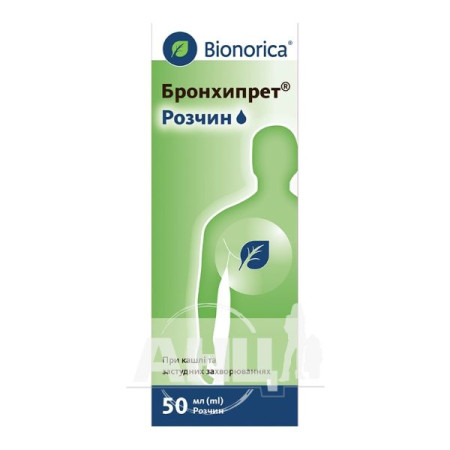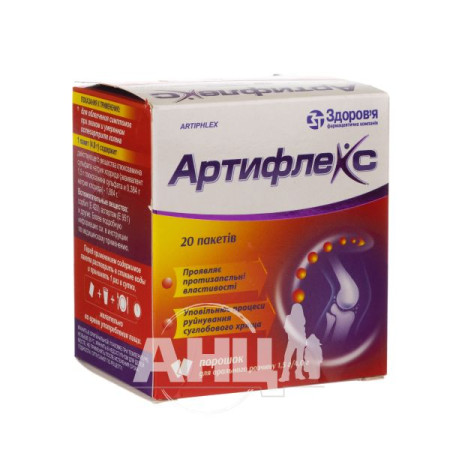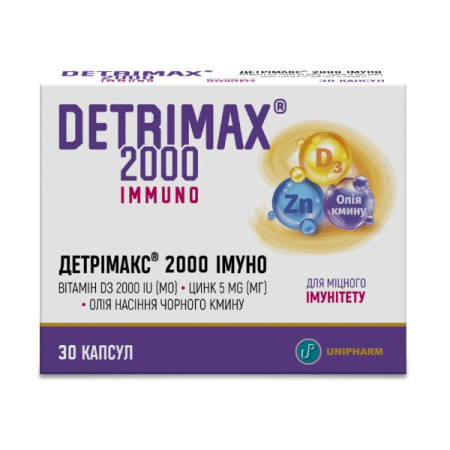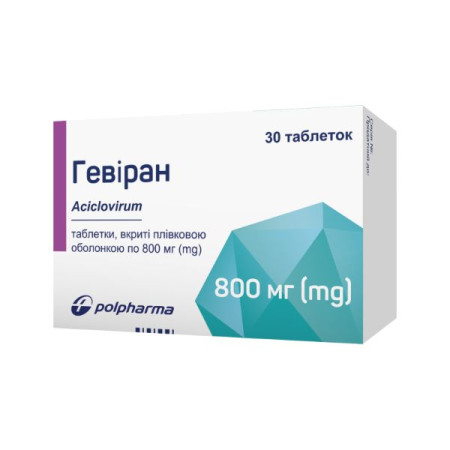Milistan Multisymptom oral suspension bottle 100 ml

Instructions for use Milistan Multisymptom oral suspension, 100 ml bottle
Composition
active ingredients: paracetamol, cetirizine hydrochloride, chlorpheniramine maleate, dextromethorphan hydrobromide;
5 ml of suspension contain paracetamol 160 mg, cetirizine hydrochloride 2.5 mg, chlorpheniramine maleate 1 mg, dextromethorphan hydrobromide 5 mg;
excipients: sodium methylparaben (E 219), sodium propylparaben (E 217), sodium carboxymethylcellulose, aspartame (E 951), xanthan gum, sorbitol solution 70%, disodium edetate, carmoisine dye (E 122), sucrose, fruit essence, purified water.
Dosage form
Oral suspension.
Main physicochemical properties: suspension from light pink to pink in color.
Pharmacotherapeutic group
Analgesics and antipyretics. Paracetamol, combinations without psycholeptics. ATX code N02B E51.
Pharmacological properties
Pharmacodynamics.
Paracetamol has analgesic, antipyretic and weak anti-inflammatory effects. The mechanism of action is associated with inhibition of prostaglandin synthesis and a predominant effect on the thermoregulatory center in the hypothalamus.
Cetirizine hydrochloride has antiallergic properties due to inhibition of the late phase of migration of cells involved in the inflammatory reaction (mainly eosinophils). Inhibits the action of other mediators and inducers of histamine secretion, such as PAF (platelet-activating factor) and substance P. It has practically no anticholinergic and antiserotonin effects. In therapeutic doses, it does not cause a sedative effect.
Dextromethorphan hydrobromide is an antitussive agent effective in non-productive bronchial cough, which occurs due to irritation of the bronchi when inhaling cold air. The mechanism of action is associated with the effect on the cough center in the medulla oblongata.
Chlorpheniramine maleate is an antiallergic agent, a histamine H1 receptor blocker. It causes a moderately pronounced sedative effect.
Pharmacokinetics.
Absorption. After internal administration, the drug is rapidly and almost completely absorbed from the digestive tract.
Taking the drug with food does not affect absorption, but slightly reduces the rate.
Distribution. Paracetamol is well distributed in tissues (except adipose tissue) and cerebrospinal fluid. The binding of paracetamol to plasma proteins is approximately 10% and increases slightly with overdose. Cetirizine is also able to bind to plasma proteins. It has a low volume of distribution (Vd – 0.5 l/kg), does not penetrate into the cell.
Metabolism. Paracetamol is metabolized mainly in the liver by conjugation with glucuronide, sulfate and oxidation with the participation of mixed hepatic oxidases and cytochrome P450. Cetirizine is practically not metabolized in the liver. Dextromethorphan hydrobromide is rapidly and almost completely metabolized in the liver to the active metabolite dextrophan.
Excretion. The half-life of paracetamol is 1-4 hours. In patients with cirrhosis of the liver, the half-life is prolonged. Binding to plasma proteins is variable. Renal clearance of paracetamol is 5%. It is excreted in the urine, mainly in the form of glucuronide and sulfate conjugates. Less than 5% is excreted in the form of unchanged paracetamol. The drug is able to be excreted in breast milk. After a single oral administration of cetirizine hydrochloride, its half-life is approximately 10 hours. The half-life of dextromethorphan hydrobromide is almost 4 hours, the drug is excreted through the kidneys in unchanged form and in the form of demethylated metabolites (including dextrorphan). The active substances of the drug penetrate the placenta and are excreted in breast milk.
Indication
Symptomatic treatment of influenza and acute respiratory viral infections accompanied by fever, muscle and joint pain, headache, sore throat and paranasal sinuses, nasal congestion, runny nose, dry irritating cough, tearing and sneezing.
Contraindication
Hypersensitivity to the components of the drug, to hydroxyzine or to any piperazine derivative, other antihistamines, severe liver or kidney dysfunction, congenital hyperbilirubinemia, glucose-6-phosphate dehydrogenase deficiency, alcoholism, blood diseases, Gilbert's syndrome, severe anemia, leukopenia, hypocoagulation, angle-closure glaucoma, risk of urinary retention due to urethral and prostate diseases, bladder neck obstruction, pyloroduodenal stenosis, intestinal obstruction, severe hypertension, coronary artery disease, arrhythmias, epilepsy; hyperthyroidism. Also contraindicated in patients at risk of respiratory failure. Do not use together with monoamine oxidase inhibitors (MAOIs) and within 2 weeks after discontinuing the use of MAOIs, antidepressants with serotonin reuptake inhibitors (fluoxetine, paroxetine).
Interaction with other medicinal products and other types of interactions
The interaction features of the drug are due to the properties of its components.
Paracetamol.
The rate of absorption of paracetamol may be increased by metoclopramide and domperidone and decreased by cholestyramine. The anticoagulant effect of warfarin and other coumarins may be enhanced by long-term regular daily use of paracetamol, with an increased risk of bleeding. Intermittent use has no significant effect.
Barbiturates reduce the antipyretic effect of paracetamol.
Anticonvulsants (including phenytoin, barbiturates, carbamazepine), barbiturates, rifampicin, isoniazid and alcohol, which stimulate the activity of liver microsomal enzymes, may enhance the toxic effect of paracetamol on the liver due to an increase in the degree of conversion of the drug to hepatotoxic metabolites.
With the simultaneous use of paracetamol with hepatotoxic drugs, the toxic effect of the drugs on the liver increases.
Concomitant use of high doses of paracetamol with isoniazid increases the risk of developing hepatotoxic syndrome.
Paracetamol reduces the effectiveness of diuretics.
Caffeine may potentiate the analgesic effect of paracetamol.
Caution should be exercised when using paracetamol with flucloxacillin, as concomitant administration has been associated with high anion gap metabolic acidosis, especially in patients with risk factors (see section "Special warnings and precautions for use").
Chlorpheniramine maleate
Chlorpheniramine maleate enhances the anticholinergic effect of atropine, antispasmodics, central nervous system depressants (tranquilizers, barbiturates), and antiparkinsonian drugs.
Concomitant use with hypnotics, barbiturates, sedatives, neuroleptics, tranquilizers, anesthetics, narcotic analgesics, and alcohol enhances the effect of chlorpheniramine maleate, which may cause symptoms of overdose.
Chlorpheniramine inhibits the metabolism of phenytoin and may lead to phenytoin toxicity.
Contraindicated with MAO inhibitors. Monoamine oxidase inhibitors (MAOIs), including furazolidone (an antibacterial drug) and procarbazine (an antineoplastic drug): Concomitant use is not recommended as the anticholinergic effects and central nervous system depression inherent to antihistamines may be prolonged and increased.
Tricyclic antidepressants or maprotiline (a tetracyclic antidepressant) and other anticholinergic drugs: the anticholinergic effect of these drugs or antihistamines such as chlorpheniramine may be enhanced. In case of gastrointestinal side effects, patients should consult a doctor as soon as possible, as this may lead to paralytic ileus.
Dextromethorphan hydrobromide
Dextromethorphan is metabolized by CYP2D6 enzymes and has a pronounced pre-systemic metabolism. Simultaneous use with inhibitors of CYP2D6 enzymes can increase the concentration of dextromethorphan in the body to a level that is several times higher than normal. This increases the risk of toxic effects of dextromethorphan on the patient (excitement, confusion, tremor, insomnia, diarrhea and respiratory failure) and the risk of developing serotonin syndrome. Strong inhibitors of CYP2D6 enzymes are fluoxetine, paroxetine, quinidine and terbinafine. When used simultaneously with quinidine, the concentration of dextromethorphan in the blood plasma increases by 20 times, which increases the side effects of the drug from the central nervous system. Amiodarone, flecainide and propafenone, sertraline, bupropion, methadone, cinacalcet, haloperidol, perphenazine and thioridazine also have similar effects on the metabolism of dextromethorphan. If concomitant use of CYP2D6 inhibitors and dextromethorphan is necessary, the patient should be monitored as a dose adjustment of dextromethorphan may be required.
The use of the drug simultaneously with MAO inhibitors, drugs for the treatment of Parkinson's disease, specific serotonin reuptake inhibitors and other antidepressants leads to an increase in the effect of the latter. The simultaneous use of the drug with these drugs is contraindicated.
The use of the drug simultaneously with amiodarone and quinidine leads to an increase in plasma concentrations of dextromethorphan.
Alcohol can increase the side effects of dextromethorphan.
Cetirizine hydrochloride
Pharmacokinetic interaction studies have been conducted with cetirizine and pseudoephedrine, cimetidine, ketoconazole, erythromycin, azithromycin; no pharmacokinetic interactions were observed. In a multiple-dose study of theophylline (400 mg once daily) and cetirizine, a slight (16%) decrease in the clearance of cetirizine was observed, while the disposition of theophylline was not affected by concomitant administration of cetirizine.
In addition, concomitant use of cetirizine with macrolides or ketoconazole has never resulted in clinically significant ECG changes. In a multiple-dose study of ritonavir (600 mg twice daily) and cetirizine (10 mg daily), the duration of exposure to cetirizine increased by approximately 40%, while the disposition of ritonavir was slightly impaired (minus 11%) when co-administered with cetirizine. The extent of absorption of cetirizine is not reduced by food, although the rate of absorption is delayed by 1 hour.
There is no evidence of an increase in the effect of sedatives when used in therapeutic doses. However, the use of sedatives should be avoided while taking the drug.
Ototoxic drugs can mask symptoms of ototoxicity such as ringing in the ears, dizziness, and fainting.
Concomitant use of the drug with alcohol or other central nervous system depressants may cause additional impairment of attention and impaired performance, although cetirizine does not potentiate the effect of alcohol (at blood alcohol levels of 0.5 g/l).
Photosensitizing drugs may cause additional photosensitizing effects.
The drug should not be used simultaneously with antitussives that suppress the cough reflex (e.g. codeine), especially before bedtime. Such combined use of drugs makes expectoration difficult.
Do not use simultaneously with alcohol.
Application features
Related to paracetamol.
Since the drug contains paracetamol, it is necessary to consult a doctor about the possibility of its use in patients with impaired renal and hepatic function. It should be borne in mind that in patients with alcoholic non-cirrhotic liver damage, the risk of hepatotoxic effects of paracetamol increases; the drug may affect the results of laboratory tests for blood glucose and uric acid.
Use with caution in elderly patients, patients at risk of seizures, patients with bronchial asthma, persistent or chronic cough caused by smoking, asthma or emphysema, when the cough is accompanied by excessive secretion. Do not exceed the indicated doses. Do not take the drug simultaneously with other products containing paracetamol.
Before using the drug, you should consult a doctor if you are using warfarin or similar drugs that have an anticoagulant effect. Patients who take analgesics every day for mild arthritis should consult a doctor. If the headache becomes permanent, you should consult a doctor. With prolonged use, it is necessary to monitor the function of the liver, kidneys, and the state of the hematopoietic system. If the symptoms do not disappear, you should consult a doctor.
Patients with severe infections such as sepsis, which are accompanied by a decrease in glutathione levels, are at increased risk of metabolic acidosis when taking paracetamol. Symptoms of metabolic acidosis include deep, rapid or difficult breathing, nausea, vomiting, loss of appetite. You should seek immediate medical attention if these symptoms occur.
If the disease is caused by a bacterial infection, parallel treatment with antibiotics is recommended.
If erythrocyte hemolysis or drug-induced hemolytic anemia occurs during the use of the drug Milistan Multisymptomny, the drug should be discontinued immediately.
If skin rashes occur, the use of the drug should be discontinued.
Caution is advised when paracetamol is co-administered with flucloxacillin due to the increased risk of high anion gap metabolic acidosis, particularly in patients with severe renal insufficiency, sepsis, malnutrition and other sources of glutathione deficiency (e.g. chronic alcoholism), and those taking maximum daily doses of paracetamol. Close monitoring, including measurement of urinary 5-oxoproline, is recommended.
Related to cetirizine hydrochloride.
When taken in therapeutic doses, no clinically significant interactions with alcohol (at blood alcohol levels of 0.5 g/l) were observed. However, it is recommended to avoid simultaneous use of the drug with alcohol. It is recommended to prescribe the drug with caution to patients with epilepsy and patients at risk of seizures.
Use with caution in patients prone to urinary retention (spinal injury, prostatic hyperplasia), as cetirizine increases the risk of developing urinary retention.
Antihistamines suppress the skin allergy test, so before conducting it, the drug must be stopped 3 days before the test (withdrawal period).
Related to chlorpheniramine maleate
The anticholinergic properties of chlorpheniramine can cause drowsiness, dizziness, blurred vision and impaired psychomotor reactions, which can seriously affect the ability to drive and use machines.
During treatment, do not use sedatives (especially barbiturates) that enhance the sedative effect of antihistamines (chlorpheniramine maleate).
The simultaneous use of chlorpheniramine with alcohol should be avoided, as the effect of the latter is enhanced.
Chlorpheniramine should not be used with other antihistamines.
Related to dextromethorphan hydrobromide
Patients with chronic cough caused by smoking or bronchial asthma, or cough due to an acute asthma attack, should consult a doctor before using dextromethorphan hydrochloride. Patients whose cough is accompanied by excessive sputum production should also consult a doctor before using the drug.
If the cough lasts more than 7 days or is accompanied by fever, rash, or headache, the patient should be properly evaluated to identify the underlying disease.
There have been reports of abuse of dextromethorphan hydrobromide. This should be taken into account when prescribing the drug to adolescents and young adults, as well as to patients with a history of drug or psychotropic substance abuse.
Dextromethorphan is metabolized in the liver by cytochrome P450 2D6. The activity of this enzyme is genetically determined. Approximately 10% of the general population are poor metabolizers of the CYP2D6 enzyme. These individuals, as well as patients receiving therapy with CYP2D6 inhibitors, may experience signs of overdose and/or prolonged exposure to dextromethorphan. Therefore, caution should be exercised when administering the drug to patients who are poor metabolizers of CYP2D6 or are taking CYP2D6 inhibitors.
Excipients.
The drug contains sodium methylparaben (E 219), carmoisine dye (E 122), sodium propylparaben (E 217), which may cause allergic reactions (possibly delayed), as well as aspartame (E 951), which is dangerous for patients with phenylketonuria.
Use with caution in patients with diabetes mellitus, as the drug contains sucrose. Do not use in patients with fructose, glucose-sucrose, sucrose-isomaltose intolerance.
It is forbidden to drink alcohol while using the drug!
Use during pregnancy or breastfeeding
The drug should not be used during pregnancy. It is advisable to refrain from using the drug during breastfeeding or to decide whether to discontinue breastfeeding if the drug becomes necessary.
Data on paracetamol:
There are no standard studies using currently accepted standards for assessing reproductive and ontogenetic toxicity.
A large amount of data on pregnant women indicate neither malformative nor feto/neonatal toxicity. Epidemiological studies on the development of the nervous system in children exposed to paracetamol in utero have not yielded conclusive results.
Ability to influence reaction speed when driving vehicles or other mechanisms
In case of neurological disorders (drowsiness, dizziness, visual disturbances), it is necessary to refrain from driving or working with other mechanisms.
Method of administration and doses
1 measuring spoon (5 ml) is inside the package.
Children aged 4 to 6 years: 1 measuring spoon 2 times a day; adults and children aged 6 years and over: 2 measuring spoons 2 times a day.
Maximum duration of treatment: 3-5 days.
The interval between doses should be at least 4 hours.
Do not use more than 2 times a day!
Children.
The medicine should be used in children over 4 years of age.
Overdose
Overdose phenomena usually occur when using paracetamol, which is the active ingredient of the drug Milistan Multisymptomny, in adults - in a single dose of 10 g or more, in children - in a single dose of 150 mg/kg of body weight or more. Overdose can also occur if the drug Milistan Multisymptomny is used in recommended or increased doses, but with a frequency of more than 4 times a day.
Symptoms of overdose may include pallor, dry skin and mucous membranes, fever, nausea, vomiting, anorexia, abdominal pain, diarrhea, intestinal atony, increased levels of transaminases, bilirubin, azotemia, impaired glucose and albumin metabolism, metabolic acidosis, oliguria, liver failure (may progress to encephalopathy, hemorrhages, hypoglycemia, coma and be fatal), hepatonecrosis, possible acute renal failure with acute tubular necrosis, which may manifest as severe pain in the lumbar region, hematuria, proteinuria; renal colic, interstitial nephritis, capillary necrosis; urinary retention, cardiac arrhythmia, tachycardia, tachypnea, pancreatitis, dizziness, headache, fever, sleep disturbances, drowsiness, tremor, psychomotor agitation, hyperactivity, irritability, mental disorders, blurred vision, nystagmus, disorientation; rash, itching, urticaria, damage to the oral mucosa, confusion, increased fatigue, malaise, mydriasis, anxiety, photophobia, sedative effect, stupor, central nervous system depression, accompanied by respiratory disorders and cardiovascular system disorders (decreased pulse rate, decreased blood pressure up to vascular insufficiency), diplopia, ataxia, convulsions.
With prolonged use of the drug in large doses, aplastic anemia, pancytopenia, agranulocytosis, neutropenia, leukopenia, thrombocytopenia may develop on the part of the hematopoietic organs, and blood coagulation activity may deteriorate, which may be accompanied by bleeding, in particular from the digestive tract.
Related to cetirizine hydrochloride.
Overdoses of cetirizine are mainly associated with effects on the central nervous system (CNS) or with effects that may indicate anticholinergic activity. Adverse effects reported after doses exceeding at least 5 times the recommended daily dose include: confusion, diarrhea, dizziness, fatigue, headache, malaise, mydriasis, pruritus, restlessness, sedation, drowsiness, stupor, tachycardia, tremor, and urinary retention.
Related to chlorpheniramine maleate.
The estimated lethal dose of chlorpheniramine is 25 to 50 mg/kg body weight. In case of overdose, the condition may vary from depressed to excited (restlessness and convulsions). Atropine-like symptoms may occur, including mydriasis, photophobia, dry skin and mucous membranes, fever, intestinal atony; CNS depression is accompanied by respiratory and cardiovascular disorders.
Related to dextromethorphan hydrobromide
Symptoms of dextromethorphan hydrobromide overdose: nausea and vomiting, CNS depression, dizziness, dysarthria, ataxia, blurred vision, myoclonus, nystagmus, drowsiness, tremor, agitation, hyperactivity, confusion, psychotic disorders (psychosis) and respiratory depression.
Treatment. In case of overdose, urgent medical attention is required. The patient should be taken to a hospital immediately for emergency medical treatment, even if there are no early symptoms of overdose. Symptoms may be limited to nausea and vomiting or may not reflect the severity of the overdose or the risk of organ damage.
If the overdose has been taken within 1 hour, treatment with activated charcoal should be considered. Plasma paracetamol concentrations should be measured 4 hours or later after ingestion (earlier concentrations are unreliable). Treatment with N-acetylcysteine can be used for up to 24 hours after ingestion of paracetamol, but the maximum protective effect will be seen if it is used within 8 hours of ingestion. The effectiveness of the antidote decreases sharply after this time. If necessary, the patient should be given N-acetylcysteine intravenously according to current guidelines. In the absence of vomiting, oral methionine can be used as a suitable alternative in remote areas outside the hospital.
In addition to the above, symptomatic or supportive therapy is recommended. Hemodialysis is ineffective.
Adverse reactions
Skin and subcutaneous tissue disorders: skin rashes, including generalized, maculopapular, erythematous; urticaria, rashes on mucous membranes, hyperemia, itching, exudative erythema multiforme, Stevens-Johnson syndrome, toxic epidermal necrolysis, persistent drug-induced erythema, angioedema, bruising, exfoliative dermatitis, photosensitivity.
Immune system disorders: hypersensitivity reactions, including allergic reactions, anaphylaxis, anaphylactic reactions, anaphylactic shock, angioedema.
On the part of the digestive tract: dyspeptic disorders, gastrointestinal disorders, nausea, vomiting, epigastric pain, abdominal pain, dry mouth, diarrhea, gastritis, heartburn, increased appetite, constipation, flatulence.
On the part of the endocrine system: hypoglycemia, up to hypoglycemic coma.
Metabolism: increased appetite, anorexia.
From the blood and lymphatic system: anemia, sulfhemoglobinemia and methemoglobinemia (cyanosis, shortness of breath, heart pain), aplastic anemia, hemolytic anemia; agranulocytosis, thrombocytopenia, leukopenia, bleeding, pathological changes in the blood.
On the part of the respiratory system: pharyngitis, rhinitis, bronchospasm in patients, including those sensitive to acetylsalicylic acid and other nonsteroidal anti-inflammatory drugs (NSAIDs), nasal congestion, thickening of the bronchial wall due to increased bronchial secretion.
From the nervous system: headache, possible paradoxical stimulation of the CNS, agitation, sedation, paresthesia, convulsions, movement disorders, dysgeusia, fainting, syncope, tremor, tone disorders (dystonia), dyskinesia, anxiety, nervousness, irritability, euphoria, neurosis, neuritis, coma, behavioral changes, memory impairment, amnesia, attention impairment.
From the organs of hearing and balance: vertigo, coordination disorders, dizziness, ringing in the ears, tinnitus, acute labyrinthitis.
On the part of the urinary system: difficulty and delay in urination (see section "Special instructions"), dysuria, enuresis.
On the part of the organs of vision: impaired accommodation of the eye, blurred vision, decreased visual acuity, involuntary movements of the eyeballs, blurring, double vision, increased intraocular pressure, mydriasis, photophobia.
Psychiatric disorders: aggression, confusion, depression, hallucinations, sleep disturbances, insomnia, drowsiness, nervous tic, suicidal thoughts, confusion, irritability, nightmares.
Cardiovascular system: tachycardia, arrhythmia, feeling of rapid heartbeat, blood pressure fluctuations, hypotension.
Musculoskeletal and connective tissue disorders: muscle twitching, muscle weakness.
General disorders: asthenia, fatigue, malaise, edema, chest tightness.
Laboratory studies: weight gain.
From the reproductive system: menstrual disorders; impotence.
Others: dry mucous membranes, increased sweating, fatigue.
Sodium propylparaben and sodium methylparaben, which are part of the drug, may cause allergic reactions (possibly delayed).
Expiration date
3 years.
Storage conditions
Store at a temperature not exceeding 25 ºC in the original packaging and out of the reach of children.
Packaging
100 ml of suspension in a plastic bottle. 1 bottle together with a measuring spoon in a cardboard box.
Vacation category
Without a prescription.
Producer
Gracure Pharmaceuticals LTD.
Location of the manufacturer and its business address.
E-1105, Industrial Area, Plot III, Bhiwadi, Alwar District, Rajasthan, 301019, India/
E-1105, Industrial Area, Phase III, Bhiwadi, Alwar District, Rajasthan, 301019, India.
Applicant.
Mili Healthcare Limited.
Location of the applicant.
2nd Floor, Office Space, 4 Chartfield House, Castle Street, Taunton, Somerset, England, TA1 4AS, United Kingdom/
Second Floor Office Suite, 4 Chartfield House, Castle Street, Taunton, Somerset, England TA1 4AS, Great Britain.
There are no reviews for this product.
There are no reviews for this product, be the first to leave your review.
No questions about this product, be the first and ask your question.


















